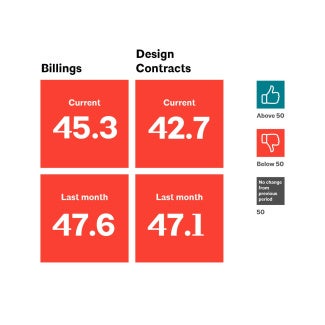Calculating the architect’s fee: Is there a better way?
How does an architect calculate fees based on costs that are still unknown? AIA’s B101-2017 agreement can help bring clarity to the murky world of percentage-based compensation.

Architect fee calculation
Architects often set their compensation as a percentage of project costs. After all, the cost to build a project directly relates to its complexity and to the degree of design services the architect is expected to perform. However, there has always been an inherent conflict in an architect calculating compensation as a percentage of project costs, as those costs are not fully known until after the architect has performed most of his or her services.
How then, does an architect calculate fees based on costs that are still unknown? AIA’s B101-2007 agreement required the owner and architect to enter their own terms for percentage-based compensation. Some of the inserted terms made sense, but others were confusing and ambiguous. The new B101-2017 offers a solution that could bring clarity to the murky world of percentage-based compensation.
AIA’s B101-2017 agreement
AIA’s previous agreement B101-2007’s instructions note at least 10 methods of computing an architect’s compensation that could be inserted into that agreement. As to using a percentage of the project’s cost, the instructions suggested the following language:
Even with this guidance, owners and architects struggled to clearly define the architect’s compensation in a ‘percentage of the cost of the work’ scenario. Often, they inserted a statement like “7 percent of the cost of the work,” and the architect billed the owner based on estimates throughout the project. In the end, if actual costs exceeded those estimates, the architect would send the owner a bill to reconcile the difference. If estimates exceeded actual costs, a savvy owner knew how to ask for a refund. Both scenarios produced accurate results, but neither seemed fair to the party who had to hand over extra money after the deal felt complete.
B101-2017 includes several revisions to clarify the architect’s compensation when it is computed on a percentage basis. Article 11 now includes prompts where compensation can be based on a stipulated sum, percentage basis, or another method determined by the parties. The percentage- based compensation is defined as a “percentage of the owner’s budget for the cost of the work” rather than as a “percentage of the cost of the work.” Language was also added to clarify how this new method will operate:
What does basing the architect’s fee on the owner’s budget accomplish? To start, it cuts out confusion about how to calculate the fee at the end of each design phase. The owner’s budget is known at the outset of the project, and the owner is required to update it as the project progresses. In other words, when the architect submits an invoice at the end of each design phase, there will be a real and definite number to base it on. This also eliminates the worst feature of the old method of basing payment on the cost of the work: The need for a bill or refund at the end of the project to reconcile estimated versus actual costs.
There is also an inherent relationship between the owner’s budget and the architect’s design services. When the architect is performing schematic design, for example, the final cost of the work is largely irrelevant. It is an unknown number, far off in the distance, that the architect can only marginally control. The owner’s budget, on the other hand, is a real number during schematic design, and the architect has a contractual obligation to develop a schematic design that is consistent with that budget. So, that relationship between the architect’s services and project costs—which makes percentage-based payments appealing in the first place—still exists and is made stronger by basing the architect’s compensation on the owner’s budget.
There are a few nuances that owners and architects should understand when calculating the architect’s fee as a percentage of the owner’s budget. For example, B101-2017 clarifies that once the owner makes a progress payment to the architect, it cannot be adjusted based on subsequent increases or decreases in the owner’s budget. Thus, if the project begins with a $100 million-dollar budget, which escalates to $120 million dollars during the design development phase, the architect cannot request 20 percent more fee for its schematic design billings. The architect can, however, seek compensation as an additional service if that budget escalation was due to a material change in the project or one of the other reasons listed in Article 4 of B101-2017.
Architects should also be prepared to have a conversation with the owner about the budget, project expectations, and the architect’s compensation at the outset of a project. A lower initial budget may lend itself to the architect charging a higher percentage fee. An unrealistically low initial budget may result in the architect charging the owner for additional services if the architect is asked to perform more work than was initially anticipated.
Lastly, B101-2017 offers the architect protection if the owner opts to not build the project, or a part of it:
There are many ways to structure an architect’s fees. There is no right or wrong way to do it. But for those architects who are frustrated with the cost of the work-based compensation, B101-2017 may finally have an answer.
For more on AIA Contract Documents, visit aiacontracts.org.
Mike Koger, AIA, Esq., is manager & counsel of AIA Contract Documents



